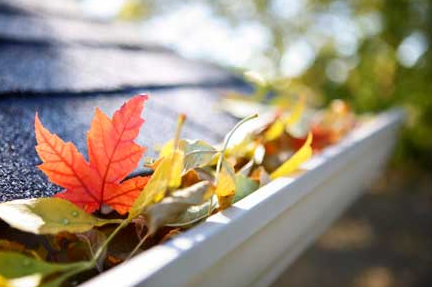Fixed those gutters? Your building needs you!
 Your building needs you! Unfortunately, the best time to check for leaks and overflows in gutters and downpipes is while it is actually raining.
Your building needs you! Unfortunately, the best time to check for leaks and overflows in gutters and downpipes is while it is actually raining.
National Maintenance Week is coming up in November and this annual awareness week always ends with National Gutters Day - this year on Friday 27 November 2015. It is a gentle reminder for everyone to take a little time to make a simple check on the condition of any property you are responsible for. A basic building ‘MOT’ can save you from having to spend a great deal of money at a later date.
November is the time to start trouble-shooting because that’s when drains and gutters could become blocked by autumn leaf fall. Since last autumn, gutters, pipes and drains could well have become blocked with a year’s worth of leaves, moss and even tennis balls and toys. Cleaning these out will reduce the chances of damage from flooding and overflowing water.
Vegetation growing on or near a house should be removed, cut back or pruned. Clearing your roof of excess moss, which can get knocked off by heavy rain and end up in your guttering, is also a good idea. Moss thrives in shady positions, so if you want to reduce the amount that grows on your roof, cut back overhanging trees.
If your gutters have seen better days, it may be worth considering replacing them rather than simply cleaning and clearing them. As long as you invest in good quality metal systems, you can rest assured they will last for many years to come.
Installing new, metal rainwater systems can save you thousands of pounds in building repairs
Gutters are an important part of maintaining your home – they stop water from soaking your roof and exterior walls. The weather will inevitably cause wear and tear in your guttering so you need to assess it, from the ground level, twice a year and from gutter level at least once a year. (Always lean ladders against the building and NOT the gutters). Look out for cracks, evidence of leaks or sagging gutters.
Downpipes carry water away from the guttering at the roofline and usually have a ‘shoe’ and grate at the end so water doesn’t pool around the foundation of your home. If there is a blockage anywhere in the downpipe, the water will collect and overflow from the guttering – this can lead to damage to roofs, external walls and foundations. Blockages around the grates can leach water into the earth around your building’s foundations and may eventually lead to subsidence.
Make sure that all gutters are fastened correctly and all drains take the water away from the house effectively.
Ideal maintenance tasks
- Look for blocked downpipes during heavy rain to see water coming from any leaky joints – in dry weather look for stained brickwork
- Every autumn, clear any plants, leaves and silt from gutters, hopper-heads, flat roofs and drainage channels. It’s a good idea to do this in spring too – look out for things like balls and toys
- Remove potentially damaging vegetation from behind downpipes by cutting back or removing the plant altogether, Use a hand mirror to look behind rainwater pipes as splits and cracks in old cast iron and aluminium often occur here and are not easily noticed
- Fit bird/leaf guards to the tops of soil pipes and rainwater outlets to prevent blockages
- Have gutters re-fitted if they are sloping the wrong way or discharging water onto the wall
- If sections are beyond repair, make sure that replacements are made of the same material as the originals
- Don’t – undertake routine maintenance work at high level unless you are accompanied and have suitable equipment. If in doubt always seek help from a professional.
New coat of paint?
Cast Iron rainwater systems, part of our heritage and an old building's character, should be preserved and painted periodically when it becomes apparent that the surface finish is deteriorating. Cold weather can hinder the paint curing process and a breeze can result in debris sticking to your newly painted surface so choose a mild day.
Neil Oliver says:
"Maintenance makes a difference – never put it off!”
Sarah Beeny says:
“Next time it’s raining hard, go outside and check if there are any points that the gutters are failing. Then the next time it’s sunny, get up there and sort them out – before you have to replaster the wall instead!”
Geraint Jones, Rainclear Managing Director, adds:
“It can prove to be an extremely costly over sight to neglect checking and regularly maintaining a building’s guttering system, once or ideally twice a year”
“with sensible maintenance you can expect a cast iron rainwater system to last a hundred years! They require regular checking – at least twice a year - and the removal of any debris or vegetation from drainage channels, hopper heads and flat roofs. You also need to check the joints and paint carefully – if these become damaged the metal below will eventually rust and a damaged system will lead to the deterioration of the fabric of a building, something to avoid at all costs.”
Call 0800 644 44 26, email This email address is being protected from spambots. You need JavaScript enabled to view it. visit www.rainclear.co.uk or the Rainclear System stand on the Gable End of the Dale House inside the National Self Build and Renovation Centre (NSBRC) off junction 16 of the M4 to see the quality of each metal system for yourself.















